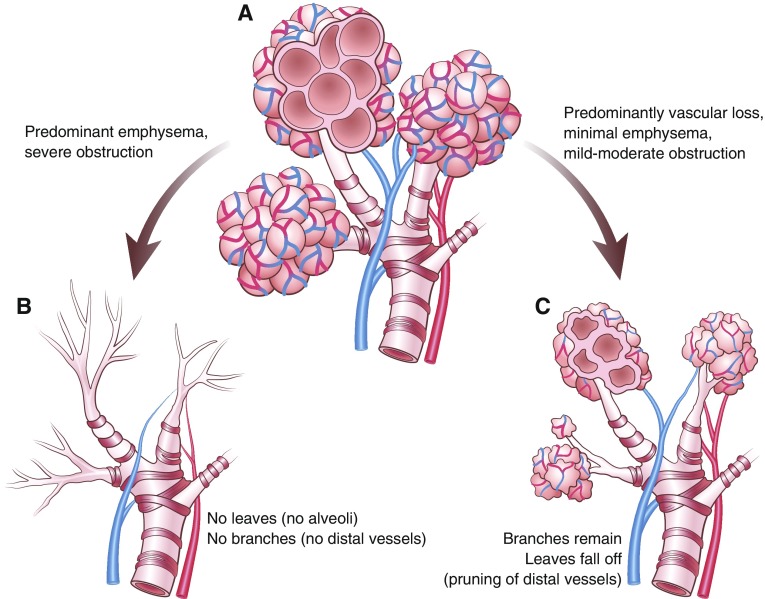Figure 1.
(A) A normal, healthy bronchovascular tree. Imagine the airways and alveoli are like branches on a tree with pulmonary arterial–capillary networks reflecting the individual leaves. (B) In most patients with chronic obstructive pulmonary disease, smoking-induced damage to the distal airways and alveolar destruction are the main mechanisms for loss of the pulmonary vascular bed and the consequent pulmonary hypertension. Dropout of the distal arteries and capillaries (leaves) is congruent with the degree of damage to the branches (i.e., emphysema and severe airflow obstruction). (C) In patients with chronic obstructive pulmonary disease with a pulmonary vascular phenotype, smoking-related vascular injury predominates. There may be primarily a loss of the distal arterial–capillary networks (pruning of the leaves) with relative preservation of the airways and alveoli (branches). Illustration by Patricia Ferrer Beals.

